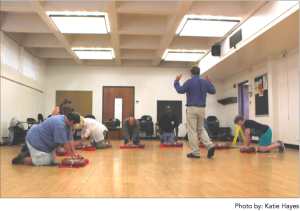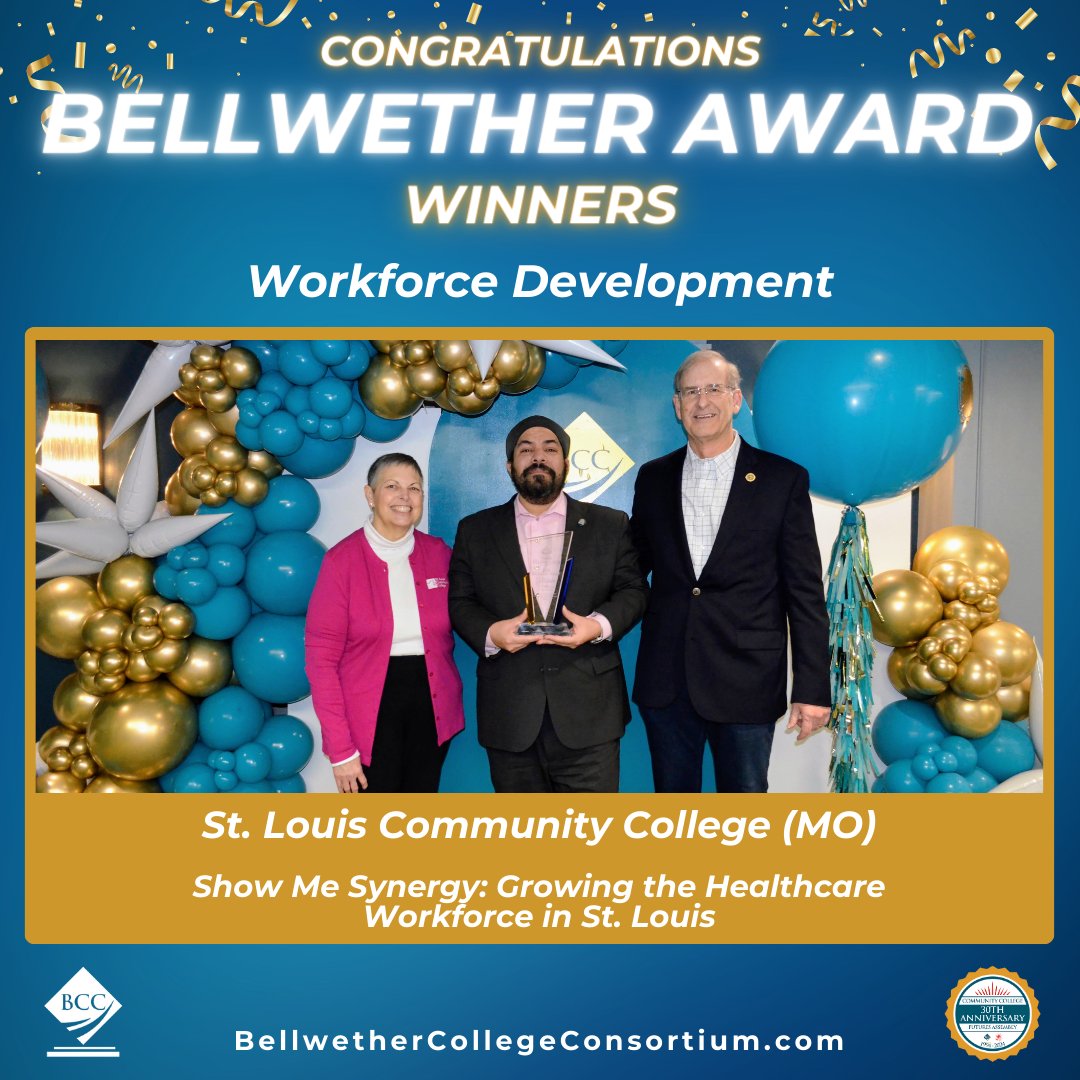Campus police and students save Meramec professor
By: Katie Hayes
Editor-in-Chief
Environmental Health and Safety Specialist John Snider offered the American Heart Association General Community Facilitated Learning Course “CPR in Schools” on Friday, Sept. 16. Snider had offered 27 CPR/AED training sessions since National Safety Awareness Month in June as of Sept. 16. That same month, Gov. Jay Nixon signed a bill which will require high school students to take 30 minutes of CPR training to graduate, beginning in the 2017-18 school year.
“The class that we gave to- day is ‘CPR in Schools,” Snider said. “It’s designed both for high schools and for colleges to give 30 minutes of practice of per- forming CPR to both comply with the statutes of the new laws that require CPR for graduation and also to get people familiar with performing CPR, because a lot of people will hesitate.”
As of Sept. 16, 138 faculty and staff were trained this year through his office or traditional AED/CPR certification courses.
“[I’m] trying to get each campus trained so they can give basic first aid until the paramedics get here,” Snider said. “Like I stress in all these classes, you are not a doctor, you need to call 911. The intent is to call 911 and prevent the person from further harm or expiring until the paramedics get here.” Snider said the American
Heart Association recommends non-medical professionals per- form hands-only CPR on adults if they go into sudden cardiac arrest. Hands-only CPR is easier to perform, which means people are less likely to hesitate giving it.
“At the point where the person has fallen down and their heart has stopped — if you do nothing — the person is more or less for sure going to die,” Snider said. “So at this point, there’s not a whole lot of harm. It doesn’t get much worse than having your heart stop and being passed out. So any type of CPR would be better than no CPR.”
Snider said the number one reason people do not perform CPR is because they think they will do it wrong. However, the Good Samaritan law provides legal protection to those who assist a person who is injured or in danger. Immediate first aid from bystanders is crucial in the interim before campus police, and ultimately paramedics, respond.
“Keeping your head while there is an emergency is what saves the day,” Police Chief Anthony Russo said. “You know, when the stuff is falling around you and you are standing tall and making the right decision, that defines character — defines training. It defines just your ability to control yourself.”
Russo said the campus police dispatcher immediately calls paramedics in the case of a medical emergency. In addition, Kirkwood Police have agreed to immediately call campus police if they receive a call. Other STLCC campuses have the same agreement with their local police stations.
“What we usually do is our dispatchers are automatically calling an ambulance based on the first bit of intel that they get,” Russo said. “So by the time the officer is there, and able to start first aid if necessary, the ambulance is seconds behind. It really works out well.”
In case of an emergency, students may call 911 or the campus police.
“Usually the dispatcher’s procedure is to ask the caller the condition of the injured,” Russo said.
“What’s the situation, how situation, how serious, are they conscious or unconscious and we ask a lot of questions really quickly — kind of a little mini assessment of the scene and then we give that to the officer responding.”
Director of Public Safety and Emergency Management Mike Potratz said Kirkwood Fire Department and Emergency Medical Services responds within minutes.
“That’s a great thing here is we have so much close support for all the campuses,” Potratz said.
Russo said training takes over during emergency situations.
“Let me tell you about most policemen,” Russo said. “After it’s all over, a day later, you kind of fall apart. ‘Holy cow, geez, can you believe that happened?’ But, you know what? That’s where training trumps emotions.”
Russo said he believes requiring CPR training in high schools will benefit everyone.
“The more emergency trained personnel to help other people, the better — period,” Russo said. “You know, what if someone makes a mistake? Well okay, they tried to give first aid, they were trained and tried it. Everybody makes mistakes, but that’s not how you live your life.”
Snider also believes in the importance of CPR training in highschools.
“These bills are incredibly valuable to the states,” Snider said. “Getting more people trained who know CPR I think is a great idea, because the more people who know CPR the more likely they’re going to do it. When you look at the studies, the reason why CPR was not performed is because they were not trained. With this, high school graduates are going to be trained to some level.” Potratz said when people practice a combination of the physical skills and the behaviors they engage in for that activity, the better they will handle an emergency situation.
“This is something that’s been known by behavioral science for a long time,” Potratz said. “If you train individuals on not only the muscle memories, how to do actions, but also the behaviors that go with them — if they ingrain those two sets of patterns — when the moment comes when they need them, they will perform them without undue distraction or disruption.”
Although the bill does not require CPR training in colleges, Snider said he wants to train as many people to perform CPR as possible.
“The bill does not apply to colleges,” Snider said. “We actually — myself and legal counsel, public safety — had a meeting and a lot of our safety standards and regulations require CPR training … we came to the conclusion that rather than just give CPR class to a small subset, and this was back in March, when we were rst talking about this and the decision was made. The decision was made that we would train as many people on CPR as we could, whether it was the 30-minute class or the certification class.”
In June, a professor collapsed and fell unconscious on the Meramec campus from heart trouble, while teaching a class. Several students ran out of the room for help, while others reported that they performed CPR.
“[A] police officer happened to be right there, real close, went in and they immediately called for assistance,” Russo said. “Our dispatcher called Kirkwood Fire and EMS, [the officer] grabbed an AED, went in, took vitals, they put the AED pads on them, which read your vitals and it suggests whether you should shock person or not.”
Russo said the AED administered at least one shock before Kirkwood Fire Department arrived and used an Automated Chest Compression Device.
“I’ve been in 40 years of law enforcement,” Russo said. “I have actually given CPR and several people survived, but most of them, it’s just not enough or it’s too late and you don’t get to them in time and they don’t make it. But this was not the case this time.”
The professor survived and three officers and the dispatcher are set to be recognized at the Board Meeting Sept. 29.
“I would call it a textbook example of how proper police training, great performance by officers, and that necessary emergency technology all worked together and it saved a life,” Potratz said.











